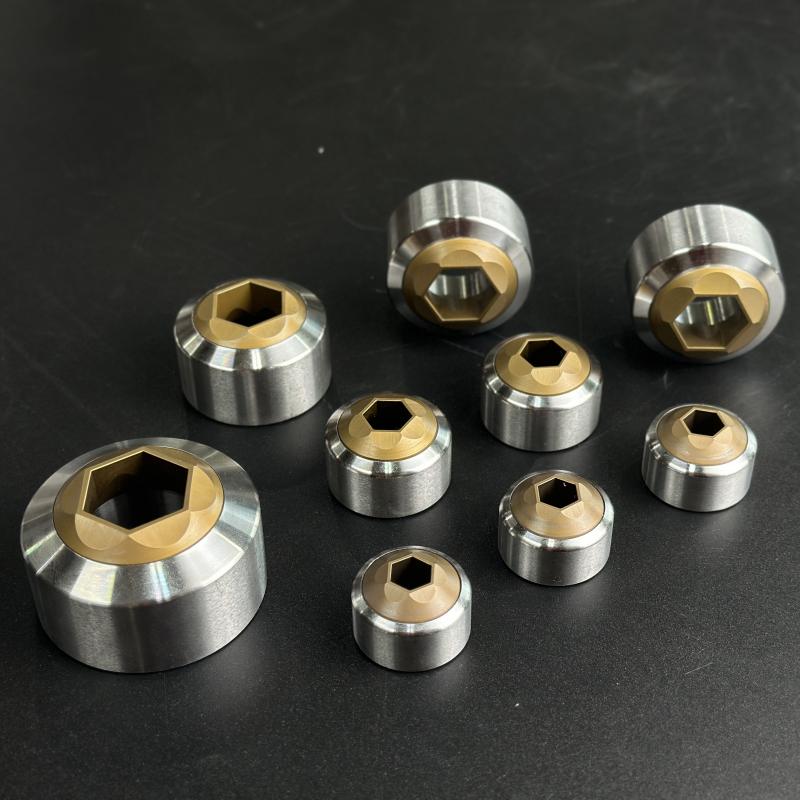Trimming Dies: Characteristics, Applications, and Maintenance
What Are Trimming Dies?
Trimming Dies are precision tools used in manufacturing to remove excess material (flash or burrs) from forged, stamped, or molded parts. These dies ensure dimensional accuracy and smooth surface finishes by cutting away unwanted material along predetermined edges. Typically constructed from high-speed steel (HSS) or carbide, Trimming Dies operate under extreme pressures ranging from 50 to 500 tons, depending on material hardness and part geometry.
Key Characteristics:
Material Hardness: Ranges between 58-64 HRC (Rockwell C scale) for HSS dies and 85-92 HRA (Rockwell A scale) for carbide variants.
Tolerance Accuracy: Maintains dimensional precision within ±0.025 mm for critical aerospace components.
Surface Finish: Achieves Ra 0.4-0.8 μm on trimmed edges, reducing secondary finishing needs.
Thermal Resistance: Withstands temperatures up to 600°C during high-speed trimming operations.

Applications of Trimming Dies
Trimming dies serve critical functions across multiple industries where precision edge finishing is required:
1. Automotive Manufacturing
Used for trimming forged connecting rods and transmission gears, achieving cycle times under 3 seconds per part. Applications include:
Engine valve retainers (tolerance: ±0.05 mm)
Suspension components with burr heights < 0.1 mm
2. Aerospace Components
Critical for titanium alloy turbine blades requiring stress-free edges with surface roughness below Ra 0.6 μm. Specific uses:
Trimming composite material layups (CFRP/GFRP)
Aluminum structural brackets with ±0.02 mm positional accuracy
3. Consumer Electronics
Precision trimming of smartphone chassis achieves 0.03 mm flatness on magnesium alloy frames. Applications include:
Camera bezel flash removal (cycle time: 1.8 seconds)
Battery contact trimming with ±0.015 mm consistency
4. Medical Device Manufacturing
Essential for producing surgical instruments with mirror-finish edges (Ra 0.2 μm). Typical applications:
Orthopedic implant contouring (CoCr alloys)
Laparoscopic tool edges with zero micro-fractures
Maintenance Procedures for Trimming Dies
Proper maintenance extends die life by 300-400% and maintains cutting precision. Follow this protocol:
1. Daily Maintenance
Inspect cutting edges for chipping (>0.005 mm damage requires regrinding)
Clean with non-chlorinated solvents to prevent stress corrosion
Apply high-temperature anti-galling lubricant (viscosity: ISO VG 68)
2. Weekly Procedures
Measure die clearance using laser micrometers (maintain 5-8% of material thickness)
Check guide post wear (max 0.01 mm radial play)
Verify punch concentricity within 0.003 TIR (Total Indicator Reading)
3. Monthly Overhaul
Perform magnetic particle inspection to detect subsurface cracks
Recut edges when radius exceeds 0.02 mm
Reharden surfaces if hardness drops below 55 HRC
Critical Maintenance Data:
Sharpening Frequency: Every 50,000 cycles for aluminum, 15,000 cycles for stainless steel
Die Life Expectancy: 1.2 million cycles (HSS), 3.5 million cycles (carbide) with proper care
Storage Humidity: Maintain below 40% RH to prevent corrosion
4. Advanced Preservation Techniques
For long-term storage (exceeding 6 months):
Apply VCI (Vapor Corrosion Inhibitor) coatings with 0.05 mm thickness
Store in nitrogen-purged containers at 18-22°C
Use desiccant packs maintaining dew point below -10°C











